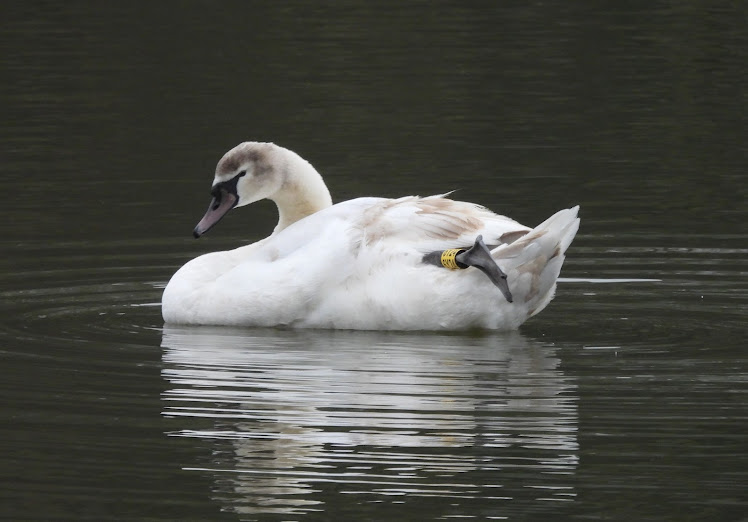This weekend saw two visits to Linacre Reservoirs. The first visit, on Saturday morning, to carry out the September
WeBS walk, followed by a second visit on Sunday with The
Sorby Breck Ringing Group, to ring birds.
I arrived for the WeBS walk at 8.30am, and the first quarter of an hour went okay with a
Grey Heron fishing on the bottom reservoir, and my first
Little Grebe here since 6th April!! Unfortunately, the rain started at about 8.45am, and really hammered down for the rest of the walk. Despite this I still managed to record a few birds:
Mallard (47),
Coot (5),
Moorhen (2; 1 adult and 1 juvenile),
Grey Wagtail (1),
Great-crested Grebe (1),
Tufted Duck (16) and
Mandarin Duck (18). The only other bird of note was a
Chiffchaff, that for some inexplicable reason, was singing in the heavy rain.
Sunday's visit was a little earlier, starting at 6.30am, and this time the weather was much better, being dry, sunny and warmish. We set the usual two nets around the feeders, and then, thanks to David's foresight, we decided to set a third net away from the usual area with a
Meadow Pipit tape playing. We got lucky on the first net round, and caught a total of 5 "Mipits", all juveniles, our first at Linacre since 2012 (see
here) and a ringing tick for Stewart.
Meadow Pipit
We carried on ringing until about 10.30am, by which time we'd caught and ringed a total of 47 birds of 12 species (Chiffchaff (3), Blackcap (1), Meadow Pipit, Blackbird, Bullfinch, Wren, Nuthatch, Robin, Dunnock, Blue, Great and Coal Tit).
Nuthatch
In between net rounds, we spotted a few birds around the ringing site including 4 Swallows, 6 House Martins, a fly-by Cormorant, a couple of Sparrowhawks and a Speckled Wood butterfly.





















































